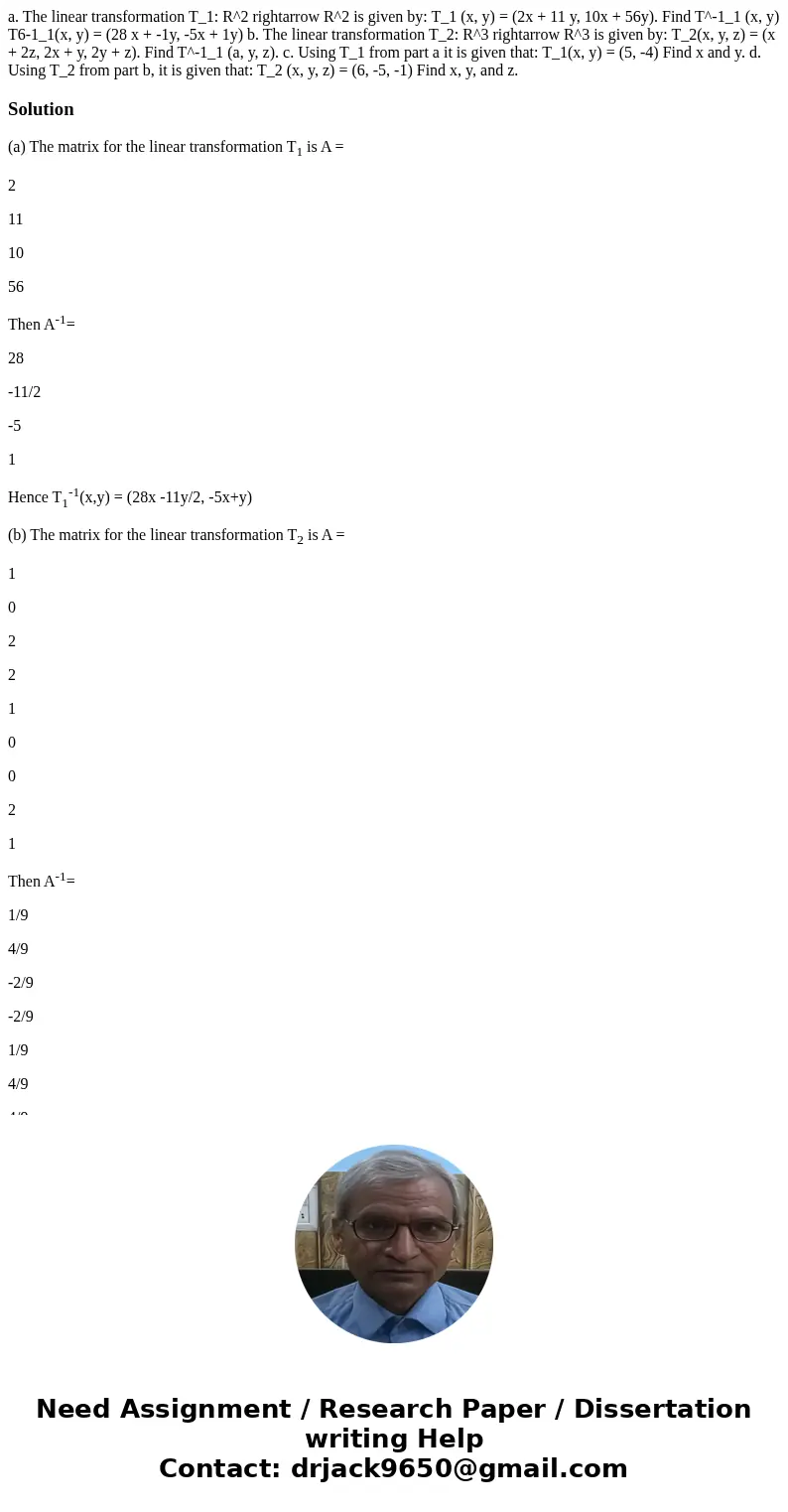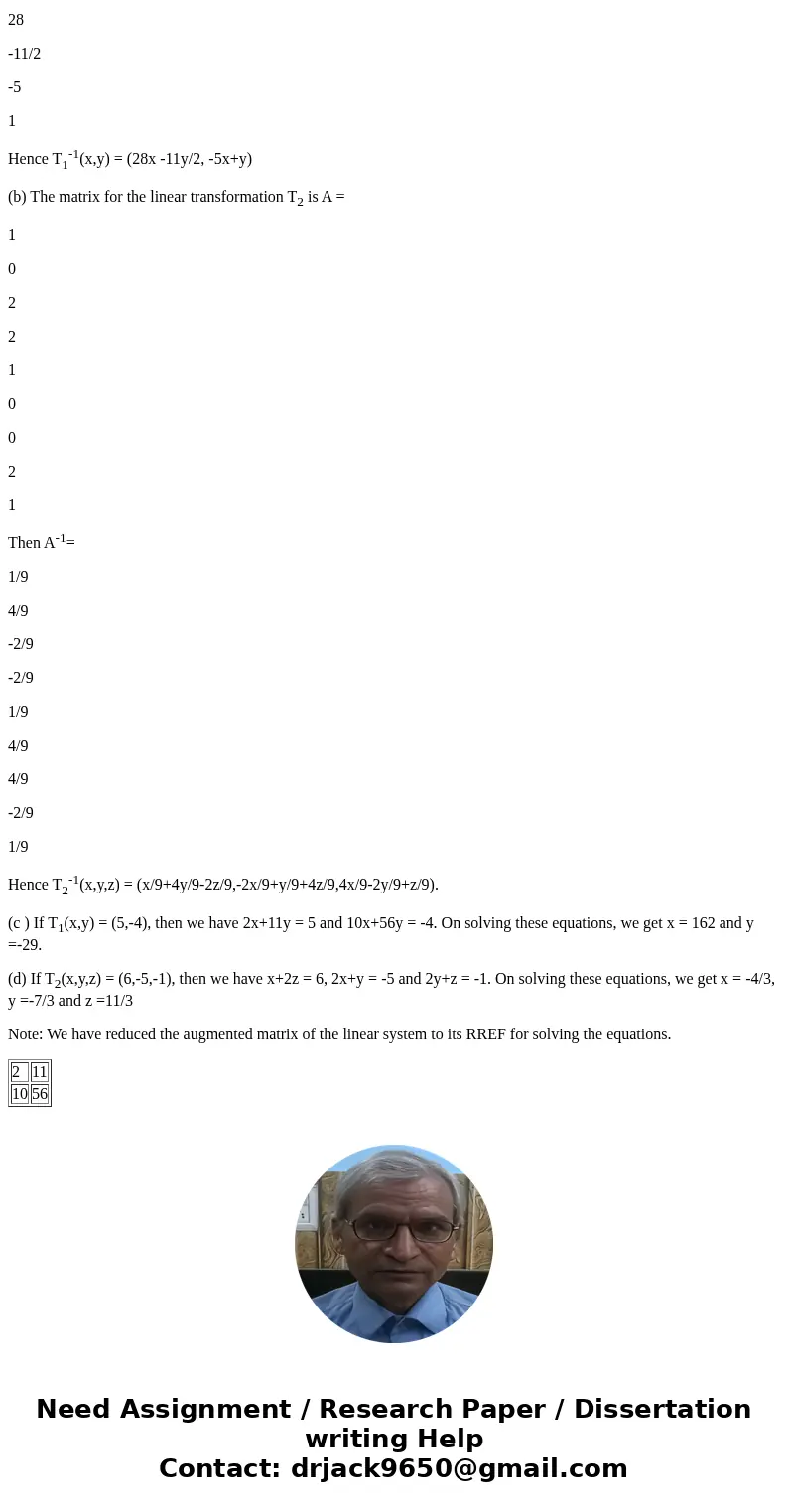a The linear transformation T1 R2 rightarrow R2 is given by
a. The linear transformation T_1: R^2 rightarrow R^2 is given by: T_1 (x, y) = (2x + 11 y, 10x + 56y). Find T^-1_1 (x, y) T6-1_1(x, y) = (28 x + -1y, -5x + 1y) b. The linear transformation T_2: R^3 rightarrow R^3 is given by: T_2(x, y, z) = (x + 2z, 2x + y, 2y + z). Find T^-1_1 (a, y, z). c. Using T_1 from part a it is given that: T_1(x, y) = (5, -4) Find x and y. d. Using T_2 from part b, it is given that: T_2 (x, y, z) = (6, -5, -1) Find x, y, and z.


Solution
(a) The matrix for the linear transformation T1 is A =
2
11
10
56
Then A-1=
28
-11/2
-5
1
Hence T1-1(x,y) = (28x -11y/2, -5x+y)
(b) The matrix for the linear transformation T2 is A =
1
0
2
2
1
0
0
2
1
Then A-1=
1/9
4/9
-2/9
-2/9
1/9
4/9
4/9
-2/9
1/9
Hence T2-1(x,y,z) = (x/9+4y/9-2z/9,-2x/9+y/9+4z/9,4x/9-2y/9+z/9).
(c ) If T1(x,y) = (5,-4), then we have 2x+11y = 5 and 10x+56y = -4. On solving these equations, we get x = 162 and y =-29.
(d) If T2(x,y,z) = (6,-5,-1), then we have x+2z = 6, 2x+y = -5 and 2y+z = -1. On solving these equations, we get x = -4/3, y =-7/3 and z =11/3
Note: We have reduced the augmented matrix of the linear system to its RREF for solving the equations.
| 2 | 11 |
| 10 | 56 |


 Homework Sourse
Homework Sourse